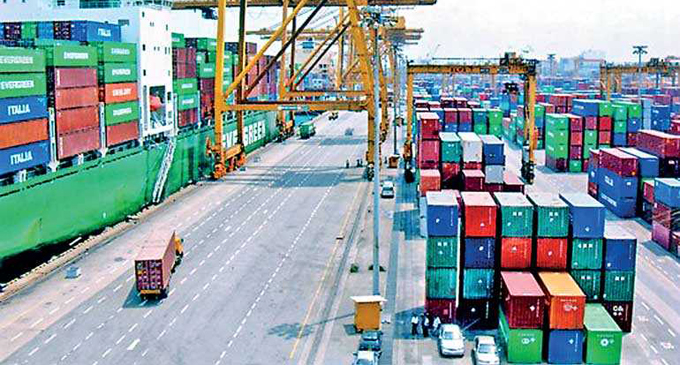
Indian Envoy meets President, Premier as ECT deal falls through
(FASTNEWS | COLOMBO) – In a flurry of meetings a day after Sri Lanka backed out of an agreement with India and Japan, to develop the East Container Terminal (ECT) at the Colombo Port, Indian High Commissioner Gopal Baglay met President Gotabaya Rajapaksa, Prime Minister Mahinda Rajapaksa and Foreign Minister Dinesh Gunawardena on Tuesday, official sources told The Hindu.
The thrust of the Indian envoy’s message to the Sri Lankan leadership, sources said, was that Colombo must adhere to its commitments in the tripartite agreement of May 2019, to jointly develop the strategic terminal with the Sri Lanka Ports Authority (SLPA) holding 51 % stakes, and India and Japan, holding 49 % together. The Adani Group from India, along with Japanese companies, was to invest in the project expected to cost upto $700 million, as per official estimates.
The Indian side, it is learnt, conveyed that the signals emanating from Sri Lanka should boost the confidence of potential investors. President Gotabaya Rajapaksa has pledged to draw foreign direct investments to the country, rather than take loans.
The three high-level meetings follow the Sri Lankan government’s cabinet decision, in the wake of raging protests by port workers’ unions opposed to foreign investment in the facility, that the operation of the ECT would be “100 %” with the SLPA, while the West Container Terminal would be offered to India instead, on a 35-year arrangement for development.
This is the second instance of Sri Lanka reversing an agreement on a large infrastructure project involving Japan, after the government scrapped the $1.5 billion, Japan-funded Light Rail Transit system last year.
The development has sparked alarm in India and Japan, according to diplomatic sources, who said Sri Lanka had neither conveyed its decision, nor offered the alternative proposal to either of the partners.
“The two countries learnt of it only after the Cabinet decisions were released,” a source said.
They were also surprised by Prime Minister Mahinda Rajapaksa’s statement to port unions on Monday that the “foreign company” did not agree with the proposals put forward by the negotiating committee from the Sri Lankan side, as discussions had commenced only last week.
The unions subsequently called off their protests.
Asked how Sri Lanka would mobilise funds to develop the SLPA, especially after the economic impact of the pandemic, Udaya Gammanpila, a Cabinet spokesman, on Tuesday said, “SLPA is going to use its own funds, as well as borrow money from local commercial banks”.
On whether Sri Lanka had discussed the option of developing the West Container Terminal with India, he said, “This is a sensitive diplomatic issue. Sri Lanka is always keen to maintain cordial diplomatic ties with India. Sri Lanka has commenced discussions with the Government of India, but I don’t think this is the stage to disclose those details.”’
While the ECT, which is in its first stage and awaits upgradation, has a 450-metre long quay wall, and water depth of 18 metres, equipping it to accommodate large vessels, the West Container Terminal (WCT) exists merely as a proposal, with no infrastructure yet. Further, the ECT adjoins the relatively shallow South Asia Gateway Terminal at the Colombo Port, allowing for economy of operations in handling cargo.
India’s geostrategic interest in the project is well known. On the other side of the ECT is the Colombo International Container Terminal (CICT) that the SLPA runs as a joint venture, in which China Merchants Port Holdings Company Limited holds 85 % stakes. The CICT, a deepwater container terminal, is the busiest among the three main terminals at the port, capable of handling large container vessels.
Not far from the Colombo Port, China has also invested in the Colombo Port City, a $1.4 billion land reclamation project by Galle Face, Colombo’s iconic seafront.

